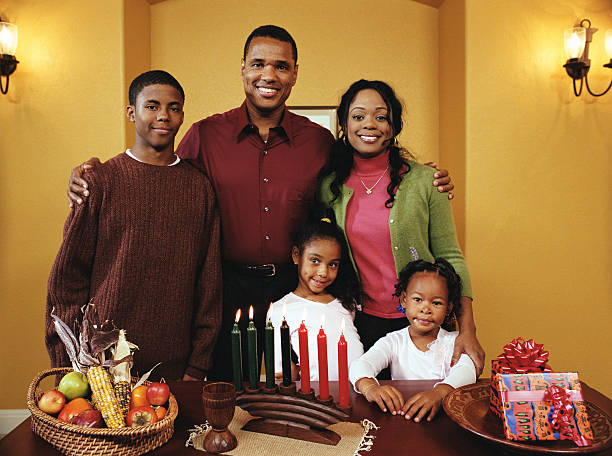
On the fifth day of Kwanzaa, you’ll celebrate and explore the fifth principle. This is when you’ll merge some self-reflection with external applications that will benefit yourself and others in the community.
Day 5 of Kwanzaa: Nia
The principle of Nia is built on purpose. While this may sound simple, it combines your personal purpose with that of those around you. In fact, the practice of Nia calls for you to pledge “to make our collective vocation the building and development of our community in order to restore our people to their traditional greatness.” That puts things in a different and possibly more complicated light.
However, practicing Nia starts with some self-reflection. Earlier in the Kwanzaa celebrations, you would have focused on whether or not you were on the right path to fulfill your career or financial goals.
This time, you’ll consider your full purpose outside of your job and other responsibilities. It’s where many people ask, “Why am I here?” so they can determine what their overall purpose is supposed to be.
Having identified your purpose, you’ll move on to determining your role in building up the overall community and the Black race in general. How does fulfilling your purpose contribute to the success you and others envision for the nation as a whole?
The principle of Nia was founded on the belief that the growth and greatness that African Americans are aiming for will never happen in isolation. As such, even as you’re setting off on a purpose-driven path, you’re encouraged to bear those around you in mind.
Some common ways to practice Nia are volunteering in the community, supporting neighborhood events, using Black-owned businesses when organizing events, and passing on your expertise or knowledge to the younger generation.
Day 5 of Kwanzaa is celebrated on December 30.
RELATED: The Seven Days of Kwanzaa: Ujamaa (Day 4)
How To Celebrate Nia
The fifth day of the festivities starts the same way as the others. The leader asks, “Habari gani?” or “What’s happening?” of those who are in attendance.
The response for the fifth day will be Nia to show that you’ll be celebrating the principle that’s dedicated to finding purpose. That’s when the leader will say a prayer. Afterward, the older adults will prepare the libations as well as the unity cup or cups.
At this point, the person who’s responsible for lighting the candles will do so. The candles have to be lit in a particular order. The black candle is lit first followed by the first red candle to the left of it. Then, they would light the first green candle to the right of the black one followed by the second red candle. Finally, they’ll light the second green candle to the right of the black candle. This green candle represents your dedication to finding your purpose and setting goals that are in line with it.
RELATED: Is Kwanzaa Like Christmas?
After lighting the candles, that person will move on to discuss the principle of Nia in a way that encourages its understanding. They may also share a poem, song, story, or passage that exemplifies Nia and how it applies to their lives. Those in attendance may be given the opportunity to share how they currently practice the principle of Nia or will do so in the future.
When the discussion ends, you will share libations and then move on to gift-giving if you’ve chosen to do it daily. Once that is done, the candles will be extinguished to show that the day’s festivities have come to an end.
There are only two days left in the celebration of Kwanzaa but there are still some important principles to explore. You’ll see how everything is stacked to build a complete picture of how you’ll get to know yourself and your role in the positive development of those around you.









